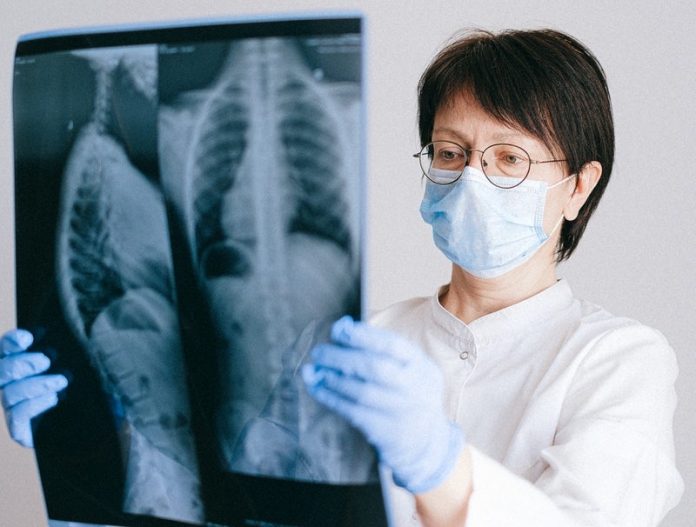
What does SARS-CoV-2, the virus that causes COVID-19, do once it enters a person’s airways, and how does infection in lung cells affect patients’ immune responses?
In a new study, researchers found there are two phases of lung infection in people with severe COVID-19.
The research was conducted by a team at Massachusetts General Hospital (MGH).
In the study, the scientists examined autopsied material from 24 patients who succumbed to COVID-19.
They used a method called RNA in situ hybridization to visualize the actual SARS-CoV-2 virus in human lung specimens.
This assay is now a clinical test being used at MGH to understand what tissues can be infected by the virus.
The analyses revealed two phases of infection in patients with severe COVID-19 pneumonia.
The early phase is defined by high levels of virus in the lungs that trigger patients’ cells to express genes involved with the interferon pathway, a critical part of the immune response.
In the later phase, the virus is no longer present, but the damage to the lungs is too severe for recovery.
The team says the interferon response to SARS-CoV-2 indicates that people’s immune systems are able to attack SARS-CoV-2, but the response is variable between patients and even in different parts of the lung of the same patient, making a ‘one drug fits all’ therapy approach difficult.
Also, treatments that target viral replication, such as remdesivir, may only be effective in the early phase of infection.
The team also found that there is surprisingly very little viral replication in the lungs, which suggests that the virus is mostly replicating in the nasal passages and then dropping into the lungs, where it can cause pneumonia and other complications.
They say it will be important to conduct additional autopsy analyses to better understand the extent and timing of SARS-CoV-2 infection in the lungs and other tissues, which could lead to improved treatment strategies for patients with COVID-19.
One author of the study is David T. Ting, MD, the associate clinical director for Innovation.
The study is published in Nature Communications.
Copyright © 2020 Knowridge Science Report. All rights reserved.



